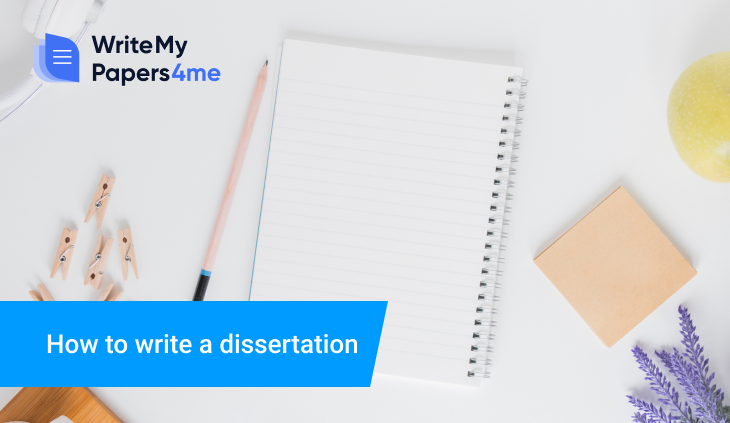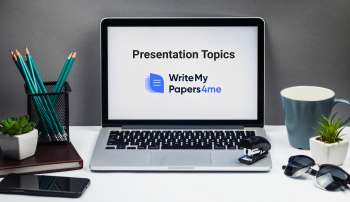Navigation of contents

A dissertation can be defined as massive original research submitted as a part of a doctoral degree. Writing a dissertation is a long and demanding process, and it’s no wonder that every student is afraid of this type of work.
However, everything is not as scary as it may seem at first glance.
Our dissertation writers have made these guidelines to help you understand the assignment, get familiar with its parts, and be able to craft a solid piece of work without anyone’s assistance. Continue reading, and WriteMyPapers4Me’ specialists will tell you how to craft a great dissertation.
Why Writing a Dissertation Can Be a Difficult Task?
Dissertation and thesis usually go hand in hand, but not all students know that they are written in different situations. The first one can be assigned any time across the course and means book-size research, while the second is given at the end of a degree.
These assignments are needed to show a deep understanding of the subject, as well as your analytical and search skills. To write a successful dissertation, it’s not enough to find information and structure it according to general requirements. You need to process huge volumes of data and come up with your thoughts that will contribute to the field.
So, what is dissertation writing? It’s a huge and time-consuming assignment that may greatly influence whether you’ll get a degree or not. Here are a few problems you may face when working on the assignment and the ways to solve them:
- Not enough research skills. Unfortunately, we are not taught how to research information properly. Thus, most students just open Wikipedia and copy-paste the material. Instead, you should go to libraries or at least use credible online databases with fresh and reliable sources;
- procrastination. This task may consist of hundreds of pages, which are impossible to complete within a week or even two. Avoid delays, and you’ll see that dissertation is not more than a simple task;
- absence of writing skills. Your paper should follow all the academic writing rules and contain the necessary elements, language, and style.
Sounds too complicated? Don’t worry, below we will discuss every stage of the writing process step-by-step, and you will be able to create an outstanding thesis without any worries.
original papers
professional writers
tight deadlines
How to Do a Dissertation – Structure of Your Future Paper
Dissertation greatly depends on the college or university you are in, as well as on the topic and approach you are using. However, there are still core elements that any paper should contain. They include:
- title page with basic information on your work;
- acknowledgments, where you thank the people, who helped you;
- abstract (a summary);
- table of contents to help readers navigate the paper;
- introduction with key facts and questions;
- literature review to back the research;
- methodology with the main tools you have used;
- results (i.e. findings);
- discussion, where you evaluate findings and results;
- the conclusion that summarizes everything discussed.
When writing a research paper of this kind, you should pay careful attention to the required size. For example, works on literature or history may be 150,000 words or longer, while engineering or math theses – twice shorter. Make sure you follow the tutor’s requirements and guidelines not only on the structure and length but also on the formatting style and other crucial elements.
Main Steps in Writing a Good Dissertation
Finally, you are ready to write the paper. But what each of the sections should include? Below you’ll find the most comprehensive and modern tips on structuring a great thesis no matter how difficult it may seem at first.
- Title Page. Like any other paper, the dissertation should begin with a title, your name, institution, department, degree, and submission date. Additional information may include student numbers, the logo of the university, and the supervisor’s name. Most programs have their own rules on formatting title pages, so learn about them in advance. And don’t forget to ask should a dissertation title be a question or not because it’s a rather common mistake.
- Acknowledgments. This section is optional and gives students a chance to thank the people who helped with dissertation writing. You can include research participants, teachers, supervisors, and even family members, who supported you along the way.
- Abstract. It is a summary of the dissertation up to 300 words long. Write it only when the rest of the paper is completed. State the main idea and goals of the research, tell about the methodology, summarize findings, and state conclusions.
- Table of Contents. Considering that the dissertation may contain hundreds of pages, there should be a list of the chapters and subheadings to overview the structure and navigate the paper easily. If the heading style is used, the table of contents can be generated automatically in MS Word.
- Introduction. Here is where you set the topic, relevance, and goal of the research. In the introduction, you should tell the audience what to expect from the thesis. Give background data and a few interesting facts, narrow focus, and state the main objectives of the future study. Close introduction with a hook or a catchy sentence to encourage the audience to read further.
- Literature Review. Before writing, you have done the research and collected information to understand the theoretical and practical aspects of the topic. In this section, you should not only summarize studies on the issue but also develop a basis for justifying the importance of your research. Here you can refer to gaps in the sources, use a new approach, and explain how new knowledge will strengthen existing concepts.
- Methodology. The methodology section is one of the most important chapters of the dissertation because here, you explain how the research was conducted. In methodology, students should indicate the type of research (whether it is experimental, qualitative, ethnographic, or quantitative), data collection methods, details of when and where the research was conducted, and your analysis methods. It’s also necessary to describe the materials and tools you have used, as well as the justification of applied methods. Your goal is to persuade readers that you have used the best possible approach to answer research objectives and questions.
- Results. To write a dissertation, you shouldn’t forget about the section with results. It’s possible to structure this chapter around hypotheses, topics, and questions. However, stick to results that are important to research objectives. Some disciplines require separating this chapter from the discussion, while others allow combining both. Here you can include graphs, tables, and charts. Take enough time to come up with the best way to present data and make sure to introduce only valuable facts.
- Discussion. The dissertation is where students evaluate the implications and meaning of obtained results compared to research questions. Here is where you should interpret results in a clear and detailed manner. Evaluate whether the results meet your expectations. Don’t forget to mention other works to show whether the results fit available data on the subject.
- Conclusion. Now, when you know how to write your dissertation, the only thing left is to round up the paper. The conclusion should answer the main questions of the research and leave the audience with an understanding of the key arguments. Some colleges and disciplines require indicating a conclusion before the discussion. First, you summarize the obtained data and then discuss it in more detail. However, in most cases, the conclusion is the final chapter, where you reflect on everything you have found. Don’t forget to explain how the results of your research contribute to the field and why they matter.
- List of References. This chapter is also called a bibliography or works cited list and contains details of the sources you have cited throughout the research. The main requirement is to follow a particular citation style because each of them has specific demands. The most common styles are MLA and APA, but you should check the program and learn which style is required.
- Appendices. The paper should contain only relevant information, which answers the research question directly. All the documents that don’t fit this requirement should be added to the appendices section. These may be graphs with full data, survey questions, or interview transcripts.
- Proofreading and Editing. Adding all the necessary sections in the right order is only half of the work. Make sure you have enough free time to check the work word-after-word to detect and eliminate mistakes and typos. Formatting errors and grammar imperfections may greatly worsen the quality of your research. If you’re not sure whether your skills are enough, you can always turn to friends, fellow students, and relatives. They will give the draft a fresh look and highlight weak places that should be altered. There are also multiple programs and online checkers, which fix typos and errors. You just need to upload the text and wait while the system does the rest. Also, you always can order our proofreading services and expert will do it for you!
Writing a Dissertation: Useful Tips
You are only one step away from the dissertation of your dreams. However, we want to make sure that you get the highest possible grade. That is why we want to share the best tips that will close this dissertation writing guide and will assist in creating a real masterpiece.
Manage Your Time Wisely
The dissertation may take months or even years to complete. Thus, it’s quite easy to procrastinate and eventually be late with a submission. Not to let such things happen, we recommend dividing the work into stages with clear time frames. Thus, you will never be late and will have enough time not only to research and write the paper but also to proofread and edit it.
Say NO to Plagiarism
Being a student, you probably know that plagiarism equals crime, and you may not only be penalized but can also lose a degree. Thus, staying original and writing every sentence from scratch is a necessity.
Never copy and paste someone else’s works. If there’s a need to include someone’s sentence, put it in quotation marks and indicate the source.
Stick to the Formatting Style Rules
There are many formatting styles available, so often, students find it difficult to master all of them. Luckily, there are multiple tutorials online, and there’s no need to remember all the peculiarities at once. The most common styles for these are MLA and APA.
Ask your supervisor which one to use and stick to the main requirements. There are multiple online programs, which allow formatting texts based on the chosen style, but it’s always better to re-check the draft because all machines can make mistakes from time to time.
Writing Your Dissertation Without Stress
Now you know why the dissertation is important. There is a whole science behind a dissertation: you need to devote months of your time to finding a good topic, researching sources, and eventually structuring data into a clear and understandable piece. However, the mission isn’t impossible, and anyone can write a great thesis if following our tips.
But if you feel that you’re running out of time or your dissertation turns out not as good as you wanted it to be, WriteMyPapers4Me.net writers are always at your service. Our writers have tens of years of experience working on the most challenging theses in a huge variety of subjects.
Ordering dissertation writing services from us will save your time, nerves and will give you the freedom to enjoy the things you truly like. Don’t hesitate any longer, place an order or contact our managers, and get a chance to change your future for the better!





